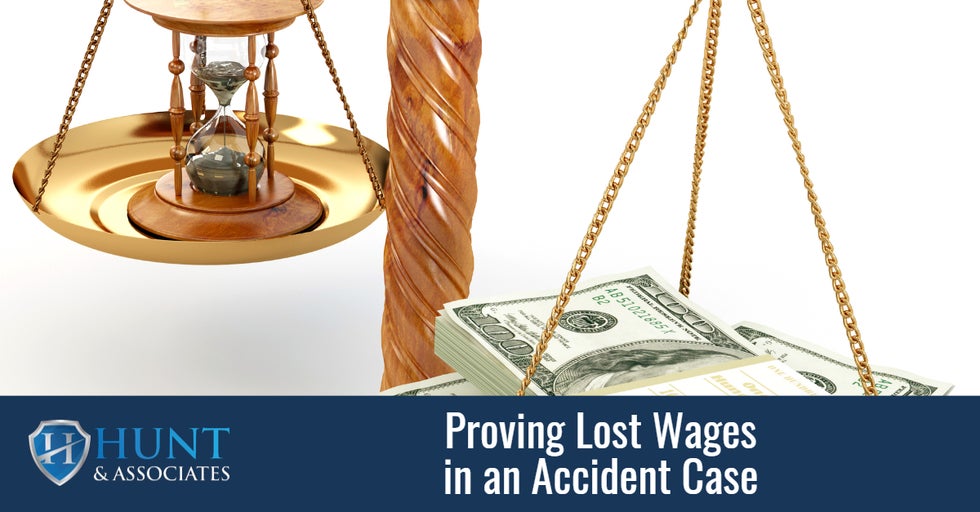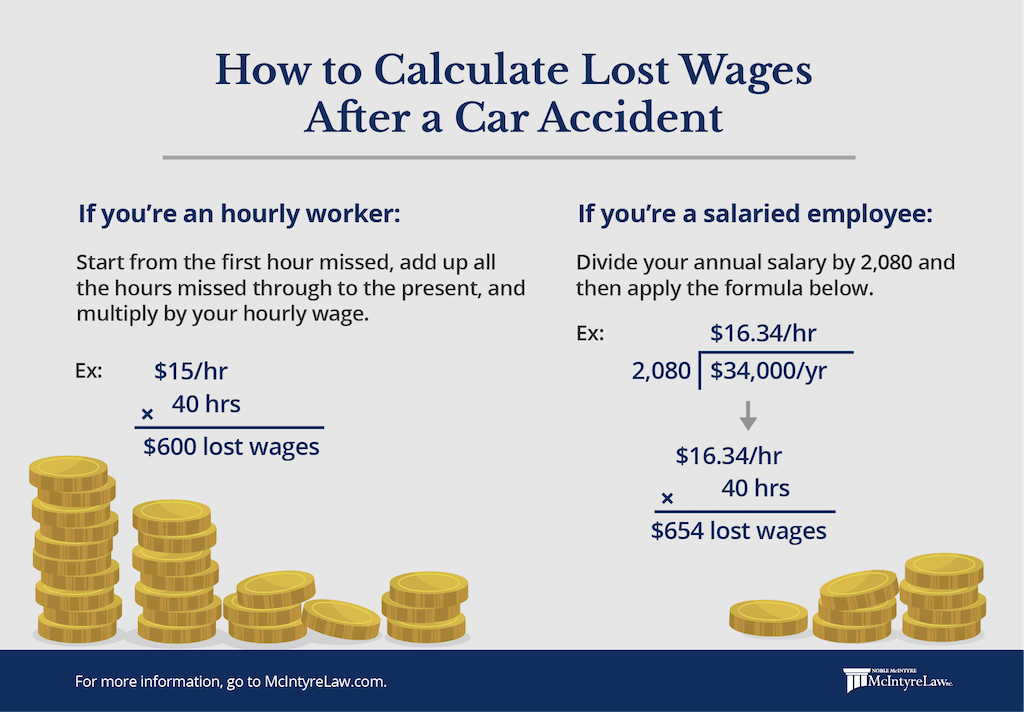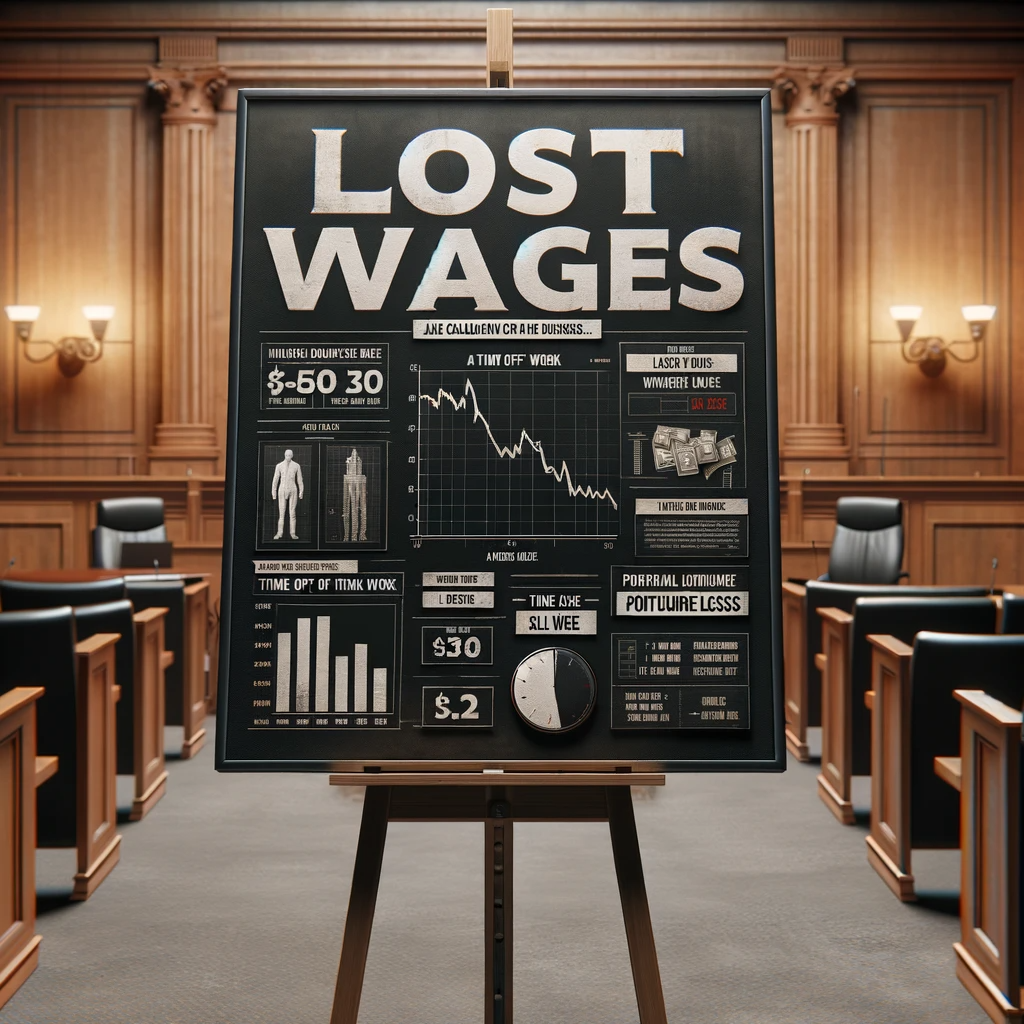Proving Lost Wages In Accident Cases: A Lawyer’s Comprehensive Guide
Proving Lost Wages in Accident Cases: A Lawyer’s Comprehensive Guide
Related Articles: Proving Lost Wages in Accident Cases: A Lawyer’s Comprehensive Guide
- Understanding Comparative Fault Laws With A Lawyer In Accident Cases
- How To Find The Best Car Accident Lawyer In LA, USA
- The Role Of Accident Lawyers In Cases Involving Reckless Driving
- Why You Need A Lawyer Even For Minor Accidents
- Common Challenges In Accident Cases And How Lawyers Solve Them
Introduction
Welcome to a journey into the world of Proving Lost Wages in Accident Cases: A Lawyer’s Comprehensive Guide. Through this article, we aim to engage, inform, and inspire you with comprehensive information and practical perspectives.
Video about Proving Lost Wages in Accident Cases: A Lawyer’s Comprehensive Guide
Proving Lost Wages in Accident Cases: A Lawyer’s Comprehensive Guide

Accidents resulting in injuries often lead to significant financial hardship, with lost wages being a major component of the damages claimed. Successfully proving lost wages in an accident case requires meticulous documentation and a strategic approach. This comprehensive guide outlines the key steps and considerations for lawyers handling such cases.
1. Understanding the Elements of Lost Wage Claims
Before delving into the specifics of proof, it’s crucial to understand the elements a plaintiff must establish to recover lost wages. These generally include:
-
Causation: A direct causal link must be proven between the accident and the inability to work. This means demonstrating that the injuries sustained in the accident directly prevented the plaintiff from performing their job duties, leading to wage loss. Pre-existing conditions or intervening events that contributed to the wage loss must be carefully addressed and differentiated.
-
Amount of Loss: Precise calculation of lost wages is paramount. This involves determining the exact amount of income the plaintiff lost due to the accident, including past and future losses. This requires careful examination of pay stubs, tax returns, and other financial documents.
-
Duration of Loss: The period of lost wages must be clearly defined. This includes the time the plaintiff was unable to work following the accident, as well as any projected future loss of earnings due to permanent disability or long-term limitations. Medical evidence is crucial here, supporting the claim of the duration of inability to work.
-
Mitigation of Damages: The plaintiff has a legal duty to mitigate their damages. This means they must take reasonable steps to minimize their losses. Failure to seek appropriate medical treatment, refuse suitable employment offers, or engage in activities that exacerbate their injuries can negatively impact their claim. The defense will scrutinize the plaintiff’s actions to determine if they reasonably attempted to mitigate their losses.

2. Gathering Essential Documentation
Compiling comprehensive documentation is the cornerstone of a successful lost wage claim. This includes:
-
Pay stubs and W-2 forms: These provide concrete evidence of past earnings and employment history. They should be meticulously collected for the period before, during, and after the accident.

Tax returns: Tax returns corroborate income information and offer a broader picture of the plaintiff’s financial situation.
-
Employment contracts and agreements: These documents outline the terms of employment, including salary, benefits, and any relevant clauses concerning disability or leave.
-
Medical records: Medical reports, doctor’s notes, and therapy records are crucial for establishing the causal link between the accident and the inability to work. They must clearly document the nature and severity of the injuries, the treatment received, and the resulting limitations on work capacity.
-
Letters from employers: Statements from employers confirming the plaintiff’s employment, salary, and time off work due to the accident are invaluable. These letters should explicitly state the reason for the absence and the period of lost work.
-
Bank statements: Bank statements can help verify income and expenses, particularly if the plaintiff is self-employed or receives irregular payments.
3. Calculating Past Lost Wages
Calculating past lost wages involves a straightforward calculation based on the plaintiff’s documented earnings and the period of lost work. However, several factors can complicate this calculation:
-
Overtime pay: If the plaintiff regularly earned overtime, this should be included in the calculation.
-
Bonuses and commissions: Any bonuses or commissions the plaintiff would have reasonably expected to earn should also be considered.
-
Benefits: Lost benefits, such as health insurance, retirement contributions, and paid time off, should be included in the calculation.
-
Taxes: The calculation should account for taxes the plaintiff would have paid on their lost wages.
4. Projecting Future Lost Wages
Projecting future lost wages is more complex and requires a more nuanced approach. This often involves:
-
Vocational rehabilitation expert testimony: A vocational rehabilitation expert can assess the plaintiff’s residual functional capacity and determine their ability to perform alternative work. This expert can project future earning capacity based on the plaintiff’s limitations.
-
Economic expert testimony: An economist can project future lost wages based on various factors, including the plaintiff’s age, work history, career trajectory, and projected inflation rates.
-
Life expectancy tables: Life expectancy tables can help estimate the duration of future lost wages.
-
Discounting to present value: Future lost wages must be discounted to their present value to account for the time value of money.
5. Addressing Mitigation of Damages
The plaintiff’s efforts to mitigate damages are crucial. This means actively seeking medical treatment, applying for disability benefits, and exploring alternative employment opportunities. The lawyer must document these efforts thoroughly. Failure to mitigate damages can significantly reduce the amount of compensation awarded. The defense will argue that the plaintiff failed to reasonably mitigate their losses if they didn’t actively seek alternative employment within their capabilities.
6. Dealing with Pre-Existing Conditions
Pre-existing conditions can complicate lost wage claims. The lawyer must carefully differentiate between injuries caused by the accident and pre-existing conditions. Medical evidence is crucial in isolating the impact of the accident on the plaintiff’s ability to work. This often involves comparing the plaintiff’s medical records before and after the accident.
7. Presenting the Evidence in Court
Presenting the evidence clearly and persuasively is vital. This involves:
-
Organizing the documentation: All documentation must be meticulously organized and readily accessible.
-
Expert witness testimony: Expert testimony from medical professionals, vocational rehabilitation experts, and economists adds credibility and weight to the claim.
-
Clear and concise presentation: The lawyer should present the evidence in a clear, concise, and understandable manner. Avoid technical jargon and focus on the impact of the accident on the plaintiff’s life.
-
Visual aids: Charts, graphs, and other visual aids can help illustrate the lost wages and make the complex calculations easier to understand.
8. Negotiating a Settlement or Proceeding to Trial
The lawyer will negotiate a settlement with the opposing party’s insurance company. If a settlement cannot be reached, the case will proceed to trial. A strong case built on solid evidence increases the likelihood of a favorable outcome.
9. Potential Challenges and Strategies to Overcome Them
Several challenges can arise when proving lost wages:
-
Self-employment: Proving lost wages for self-employed individuals can be more challenging due to the lack of consistent pay stubs. Detailed financial records, tax returns, and client invoices are crucial.
-
Intermittent employment: For individuals with intermittent or irregular employment, proving lost wages requires demonstrating a pattern of earnings and the impact of the accident on that pattern.
-
Contested Causation: The defense may argue that the plaintiff’s inability to work is not directly caused by the accident. Strong medical evidence and expert testimony are essential to counter this argument.
-
Failure to Mitigate Damages: As discussed, failure to mitigate damages can significantly weaken the claim. The lawyer must proactively document the plaintiff’s efforts to mitigate their losses.
Frequently Asked Questions (FAQ)
-
Q: What if I don’t have all my pay stubs? A: Do your best to obtain as many pay stubs as possible. Other documentation like W-2 forms, tax returns, and bank statements can help fill in gaps. Explain the missing documentation to your lawyer.
-
Q: What if I was working under the table? A: This significantly complicates the claim. Your lawyer will need to find alternative ways to prove your income, which may be challenging.
-
Q: How long does it take to resolve a lost wage claim? A: The timeline varies greatly depending on the complexity of the case, the cooperation of the insurance company, and whether the case goes to trial.
-
Q: What if my injuries prevent me from ever working again? A: This is a significant loss and requires thorough documentation from medical professionals and vocational rehabilitation experts to project future lost wages.
-
Q: Can I recover for pain and suffering in addition to lost wages? A: Yes, pain and suffering are separate categories of damages that can be recovered in addition to lost wages.
-
Q: What if my employer fired me after my accident? A: Your lawyer will need to investigate whether the firing was wrongful termination related to the accident. This could lead to additional claims beyond lost wages.
-
Q: What happens if the insurance company disputes my claim? A: Your lawyer will negotiate with the insurance company and, if necessary, prepare for trial.
This guide provides a general overview. The specifics of proving lost wages vary depending on the jurisdiction and the facts of each case. It is crucial to consult with an experienced personal injury lawyer to protect your rights and pursue your claim effectively.
Closure
We hope this article has enriched your understanding of Proving Lost Wages in Accident Cases: A Lawyer’s Comprehensive Guide. Thank you for exploring this topic with us. See you in our upcoming discussions!



